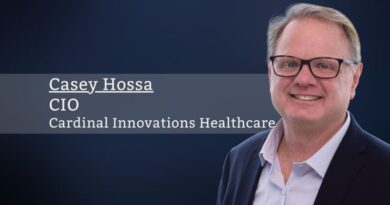Top of the Licensure Strategies to Better Manage an Aging Population – a Lead Role for Nurses Empowered by Analytics
By Bridget McKenzie, Chief Nursing Officer and VP of Medical Management, Conifer Health Solutions
People are living longer than ever, and as the baby boomers age, providing care to an exponentially larger, complex population will place a strain on the healthcare system. Nurses are at the forefront of eldercare, and now faced with overwhelming numbers of adults managing multiple chronic illnesses, medications, and transitions in care points, healthcare organizations are exploring new evidence-based strategies to optimize their role in interdisciplinary teams. The concept is simple but vitally important: Nurses are the foundation of healthcare delivery. How can care organizations best utilize nursing professionals in the most impactful, cost-effective and efficient manner? And how can new technologies and the integration of digital health information advance patient outcomes? The answer is analytics.
Comprehensive analytics also provides the nurse with a 360o view of the member
Top of the Licensure Strategies to Optimize Time for Critical Thinking
Whether it is an advanced practice nurse, a registered nurse in a facility, a licensed practical nurse in a provider clinic, or certified case manager in a care delivery setting, “top of the licensure assignments” (i.e., offloading less complex work from the next level above) is an increasingly popular strategy among organizations across the care continuum. Top of the licensure goals involves continual evaluation of processes to identify tasks that can be completed by other allied health professionals to help free up more time for what nurses do best: perform critical cognitive thought, assess for and identify needs, and deliver holistic care to more patients.
Harnessing Technology to Optimize Nursing Resources and Make Smarter, Safer Care Decisions
Technology adoption is a pillar to “top of the licensure” strategies. After all, technology at its core is designed to empower human performance to the fullest extent of training and capability. With an eye on improving quality and value-based care, harnessing the benefits of rapidly developing technologies is a “must do” for care facilities and organizations.
Electronic Health Records (EHR) are nearly ubiquitous in every healthcare setting across the United States and have become essential tools to promote patient safety and automate processes. EHR technologies enable efficient and secure sharing of health information across interdisciplinary teams and care facilities to prevent errors, avoid duplication of documentation, and provide greater coordination of care.
While it’s clear that EHR technology has transformed the way care is delivered, it presents significant limitations in care management workflow and in optimizing the nurse’s role in detecting physical and/or deteriorating changes in the patient condition. After all, EHR technology is designed to document care–not assess and analyze it.
Enabling the Enabler–Workflow Tools to Supplement the EHR for Care Management Workflow
The guiding principle behind care management is the identification, development, and timely delivery of appropriate interventions to produce positive clinical and financial outcomes within a given population. Utilizing predictive data analysis models in concert with EHR technologies is crucial in identifying at-risk patients – and in leveraging the nurses top of licensure skillsets.
Communication between the EHR and a care management workflow tool can drive efficiency, improve communication between all members of the healthcare team, and alleviate redundancies. It does that by delivering timely and accurate predictive risk scoring through the data gathered by the EHR and other care documentation tools. As a result, nurses and other care manager disciplines can target and engage with at-risk individuals earlier in the condition and/or disease state.
Lacking insight from good analytics, nursing skills are placed on hold as additional legwork is undertaken to identify patients most at risk. Significant time is expended reviewing multiple information sources, including payors, the EHR hospitals, ERs/Urgent care centers, other caregivers, pharmacies, and labs – assuming that that information is accessible at all. This type of administrative work is certainly not top of the license activity for nurses. Comprehensive analytics, such as risk stratification, sorts data based utilization patterns, treatments for chronic conditions, cost, medications, and more to leapfrog over the identification process and speed up nursing engagement for populations members most in need of care management intervention.
Beyond identification, comprehensive analytics also provides the nurse with a 360o view of the member; including diagnoses, in and out of network utilization, provider/specialty visits, admission/readmission, ER utilization, gaps in care, and medication reconciliation.
All of this information provides the care manager a strong foundation to initiative care protocols. Fingertip access to comprehensive historical details, especially around gaps in care, serves to further support and educate the member on what actions are needed to maintain and improve their health.
Unleashing the power of analytical insight to reduce health risks among patient populations not only drives improved disease management, better health outcomes, and reduces overall costs for a strained healthcare system – it helps nurses function at the top of their license.



